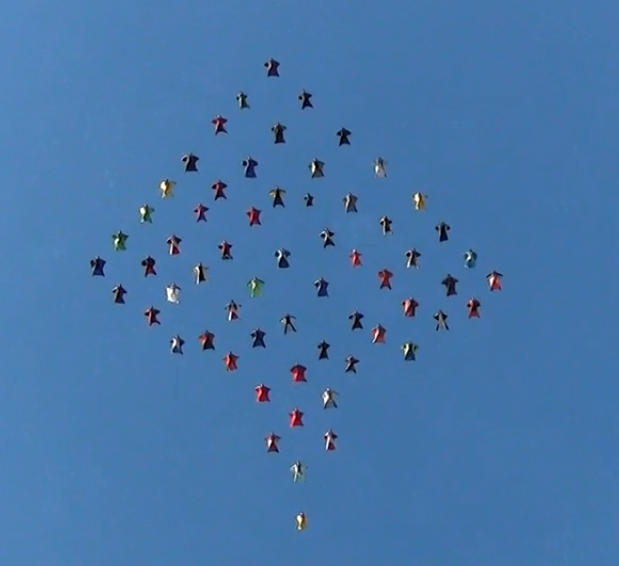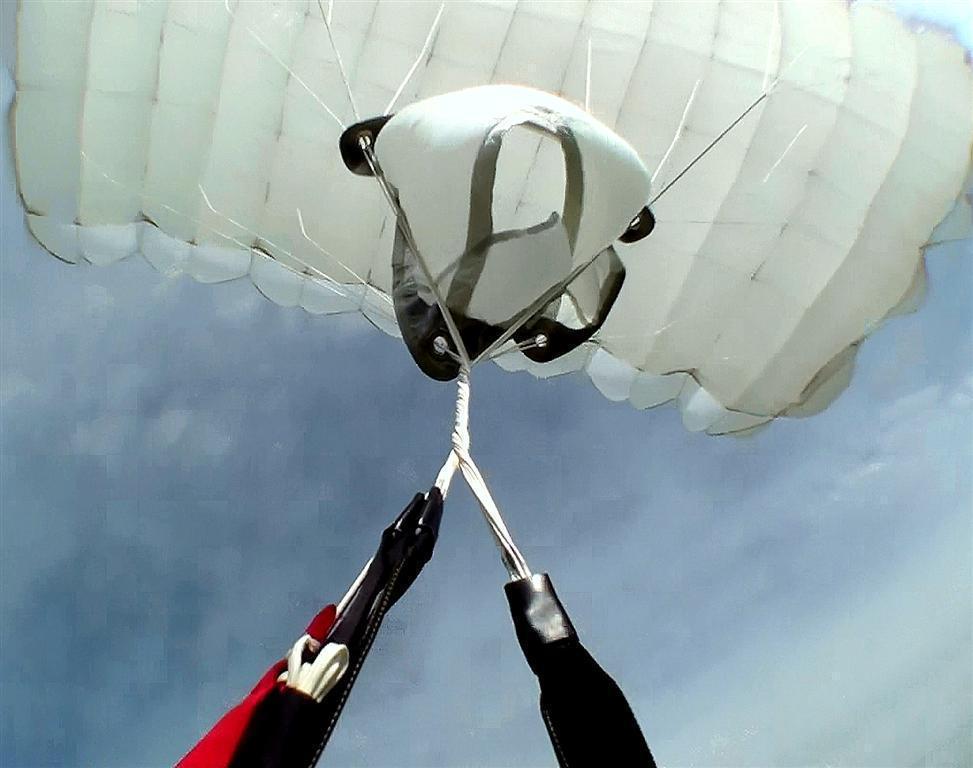Leaderboard
-
in Posts
- All areas
- Adverts
- Advert Questions
- Advert Reviews
- Videos
- Video Comments
- Blog Entries
- Blog Comments
- Images
- Image Comments
- Image Reviews
- Albums
- Album Comments
- Album Reviews
- Files
- File Comments
- File Reviews
- Dropzones
- Dropzone Comments
- Dropzone Reviews
- Gear
- Gear Comments
- Gear Reviews
- Articles
- Article Comments
- Article Reviews
- Fatalities
- Fatality Comments
- Fatality Reviews
- Stolen items
- Stolen item Comments
- Stolen item Reviews
- Records
- Record Comments
- Record Reviews
- Help Files
- Help File Comments
- Help File Reviews
- Events
- Event Comments
- Event Reviews
- Posts
- Status Updates
- Status Replies
-
Custom Date
-
All time
January 20 2016 - August 17 2025
-
Year
August 17 2024 - August 17 2025
-
Month
July 17 2025 - August 17 2025
-
Week
August 10 2025 - August 17 2025
-
Today
August 17 2025
-
Custom Date
09/22/2021 - 09/22/2021
-
All time
Popular Content
Showing content with the highest reputation on 09/22/2021 in Posts
-
3 pointsY'know, reading Winsor's posts reminds me of my own path of learning about race/gender/orientation. I started out about as ignorant as they come. I went to an all-boys catholic high school where there were four black students (because if they had at least four they qualified for some federal something-or-other) and four non-catholic students. Gay bashing was pretty much a given. I was once in the dean's office (wound up there a lot) when two kids were hauled in for fighting. The kid who swung first said "but he called me gay!" The dean asked "Is that true?" Other guy said "Yes, but . . . ." They both got the same detentions, because "gay" was the worst insult imaginable. Nothing was worse. Then I got to college and learned a whole lot quickly about other races (Indian and Asian primarily) sexual orientations (she's WHAT?) and other religious options (of which "none" was a very popular choice.) Had to re-evaluate a lot. Then I graduated and went into industry. I worked with people of all genders and races. Even knew a gay woman! I understood. Gay people might have problems, and might be gross, but they did their own thing. Transgender people had mental problems (it was right there in the DSM IV as a dysphoria) but I understood that they wanted to be seen as the opposite sex. I finally understood women because I was finding it easier and easier to find girlfriends. And I could safely ignore everything else, because now I knew what was important, and I happily told people about my enlightenment. I was race blind! I had no problem with gays. I thought women were equal. I was woke. On that now-famous Dunning-Kruger curve, I was at the top of that first peak. Then I found myself managing a trans woman, and realized I knew nothing about trans people. I discovered my best friend from primary school was gay and hadn't come out for a long time because of . . . people like me. I talked to a man I worked with for years at a defense contractor and learned about what it was like to be perceived as black when it came to social situations. Did camera for an all women 8 way team where most of the members were not straight. I talked to an old friend I had known for years and found out she had been raped while I was seeing her. And when I talked about that with some other friends of mine who were women, a good half the time there would be a long pause - and then I would hear about their rape, and how they felt like they couldn't tell anyone. And I started realizing that I really knew very little about any of that, because I just didn't have the background, and I was relying on baseless assumptions. I am now learning, slowly. I've hit the bottom of that DK valley and am slowly starting to climb the other side. I definitely don't have it all figured out, but I know the direction to go, and I know the importance of DEI programs and strong policies on non-discrimination and anti-harassment. Even helped start the DEI program at my last company, and got a few parts of the sexual-harassment program training changed because I disagreed with its approach. Winsor is traversing the same curve now. I will leave it as an exercise for the reader to determine what point on the curve he currently occupies.
-
2 pointsI recently found this scribe, re-read it and smiled. I originally wrote this for blue skies magazine, but since they seem to be history, I'm posting it here. Maybe you will too? A Tale of Two First Jump Courses Even though I’m an old guy who is all too rapidly approaching the opportunity to join the S.O.S. club, I’m happy to say that this level of “maturity” allowed me to do my initial first jump course during an interesting time of student gear transition. I made my initial first jump @ Skydive Perris in May of 81 while I was a Marine. When I tell people this, they naturally assume that I made military jumps. Actually I started jumping as a way to get away from my fellow jarheads at the El Toro air base. For some reason I didn’t really click as a military guy and was considered to have an attitude problem. What better reason to go to the DZ and meet new friends who might be a tad more accepting of me? The classroom part of the FJC occurred in the barracks. A former marine had a tidy business teaching the FJC class to military people. He would come to the base, teach the classroom part, get paid, then see who would show up at the DZ for in-harness training <no refunds for no-shows J>. Gear at the time was an interesting mix of “conventional” and piggyback. While we were on the static line we jumped T10s on our back and some other round thing on our belly. Once we were cleared for freefall we had the opportunity to upgrade to piggyback gear. You haven’t enjoyed a “modern gear upgrade” until you’ve had the chance to jump with both a 32 foot round main and 28 foot round reserve packed into the Kelvinator on your back. A few memorable events of the student training progression include; 1. Climbing out onto the strut of the 182 on my first jump and telling the pilot 10 right, (why did he and the jumpmaster just laugh at me and wag the wing?) 2. Backing up to the tailgate door’s abyss of a Skyvan while trying to see the floor under my belly mount reserve. I clearly remember being afraid of falling out before I was ready. 3. Sitting in the shade on the sidewalk while waiting our turn to climb into the DC-3 and sweating from fear and anxiety. 4. Sitting in the shade on the sidewalk while waiting our turn to climb into the DC-3 and watching a student dangling from the door of the DAC at 2,800 feet. He was twisting in the prop blast with his rig locked closed and firmly attached to the airframe via the static line. The jump master ended up clipping into the line, slid down to the mostly unconscious student, cut the line and initiated reserve deployment. A young Norman Kent got a glorious sequence of photo’s while sticking his head, (and camera), out the port fuselage door. 5. Losing a bit of altitude awareness on my graduation jump and initiating main deployment ~ 1800 feet. I was certain that I had failed, but the jumpmaster came over, slapped me on the back and told me, “congrat’s, you’re a skydiver”. Fast forward a bunch of years. I’d daydreamed about going to a DZ sometime where no one knew me and pretending that I was a newb while taking a FJC. But to more accurately recreate my FJC experience, it had to be a static line FJC. Those were pretty much non-existent in So Cal after the early 90’s so that dream just simmered. One day I was in Portland OR on business and the vendor I was auditing chatted me up about jumping. He was stoked about taking a FJC. I did a bit of research and found a local DZ that allowed static line FJC progression. YES! Jim and I called Skydive Wilburs* (name changed) and made an appointment for the next day. I gave Jim my abbreviated version of the FJC; arch on exit and keep your feet and knees together on landing. What more can you really do as a S/L fist jump student? We found out what else you can do during the 4 ½ classroom portion of the FJC; gear familiarization, airplane boarding, exit technique, good canopy recognition, reserve procedures, flying the pattern, blah blah blah. The instructor did quite a good job and obviously had concern for the students and passion the sport. Two thumbs up. I had no trouble staying engaged in the instruction and had a good time treading the line of appearing apprehensive / engaged / knowing too much during Q&A. During one of the breaks Jim and I walked around the DZ and were chatting about how it seemed they had no clue I was an imposter. We walked into a packing / beer drinking area that had several posters on the wall, including some from the old Django Canopy Company. That put a big smile on my face since my CReW team were flying the canopies in the posters. The people at Wilbur’s were looking at me nearly every day and didn’t know it. They geared us up, (dual square piggyback rigs), a final run through of reserve procedures and walked us to the plane, a Beaver. Yuck, my only previous experience with a Beaver was at the 85 CReW Nationals in Muskogee. That pilot flew barefoot and smoked on the way to altitude. Climbing to 6.5 in a Beaver full of large CReW dogs takes a long time. The Beaver pilot at Skydive Wilbur’s didn’t smoke and wore shoes. That combined with only having 4 people in the plane made the ride to 9.5 pretty sweet while watching the beautiful Oregon countryside. Exit altitude, jump run, I remind Jim to arch and keep knees and feet together while the door swings open. He climbs out on the strut and seems to have a good exit. The jumpmaster pulls in the S/L and gives the command, “climb out on the strut”. I climb onto the strut while smiling at her and saying, “jumping borrowed gear is black death”. She gives me a WTF look and watches my exit. The jump, canopy flight and landing were uneventful as they say in Parachutist. The reception I got upon landing was not. Wilbur, the DZO was pissed. He was sure I was there from the FAA or USPA or CIA or someone just to bust his operation. It took a bit of ‘splaining about how this was my finally realized dream before he cooled off and warmed to the idea. We even shared a few beverages and he invited me back to jump his ParaCommander. The jumpmaster wanted nothing to do with me even after explanations. My friend Jim? Well he forgot a critical part of my FJC instruction, badly tweaked his ankle and never made another jump. I had a great time reliving my FJC and would encourage you to do what it takes to make your dreams come true. Blue Skies, Black Death. Craig Fenstermaker D-8292
-
2 pointsIn the interests of transparency I should mention that I taught quantum mechanics for some 30 years before i retired.
-
2 points
-
1 pointOver the years, it seems like one of the divides on dz.com is a scientific approach vs a debate approach. And since any more the audience is small, the debaters are debating “against” the “evaluative” scientists. So they go round and round, each with different criteria for intellectual success. Me, I’ll go with science — look at the data, rather than trying to direct the discussion. Debate seems to require a more narrowly defined arena than science, and the real world and actual knowledge (as opposed to sophistry and winning). Me, I’ll come down against debate. It seeks to win, rather than expand. Wendy P.
-
1 pointOf course he is having a chuckle Because he thinks we don’t realize the picture he posted is actually of an actor with a similar name
-
1 pointAnd you’d probably never make any of the mistakes people who have died skydiving or BASE jumping made, either. No one ever will, until they do. Wendy P.
-
1 pointI have EXACTLY the same issue. Newtonian physics is something that we can inherently relate to because the physicality of it is something we're exposed to every day. Even if we don't have specialized knowlege to understand esoteric details the system generally FEELS right based on a reference that we're familiar with - our normal lives. But I think quantum mechanics isn't like that. It REQUIRES a specialized language (mathematics) to describe and to create a reference framework in order to penetrate even just a little into the subject. We don't accidentally pick up any gross concepts in our everyday lives that apply to it in the same way that we do to Newtonian motion. I think this is a good example of the broader issue - being sceptical about something that we don't understand despite others who have a much deeper knowlege giving us information of why we shouldn't be. Personally, I think being skeptical of something I DO understand and have a reasoned argument for that skeptisim is a more robust way to shape my opinions. For something like quantum mechanics I have to trust people who understand the detail far better than me (while still understanding that it's a second hand position). I think this is particularly a problem with the vaccinations because of the pop-science as it is explained by the media. Invariably all of these sources give just enough basic knoledge to make people feel like experts, despite not having the background to be able to accurately apply or extrapolate data. Dunning-Kruger absolutely applies here.
-
1 point
-
1 pointIn rigging we call it 5 cord, just as we call size 69, tex 70, "E" thread. That is because the US military called it that. To the rest of the world it is size 346 or TEX 350 nylon bonded thread. https://www.thethreadexchange.com/miva/merchant.mvc?Screen=CTGY&Category_Code=nylon-thread-346
-
1 point
-
1 pointNonlinear systems can be solved with implicit methods, and linear systems are usually solved with iterative methods like Jacobi, Gauss-Siedel or the Conjugate Gradient method and they would be absolutely useless in treating covid, because it's a completely different subject. I solve complex nonlinear systems in my day job. And I can assure you, I am less than useless at treating covid or making vaccines. What I am useful for, is solving complex nonlinear systems, and pointing out that you're probably just saying stuff from my field (that has nothing to do with covid) to impress people with technical jargon. Why does it sound like another poster? hmm...
-
1 pointIt may be irritating but often it's just plain necessary. If someone showed up to a DZ claiming parachutes don't work and he wanted everyone grounded, they would probably dismiss him. Even if he had a compelling theory he wrote down about it. Likewise, if during a pandemic a guy shows up at a clinic demanding that they stop vaccinating people because vaccines don't work, they'd probably dismiss him too. Even if he had a theory that he read about and had ten Youtube videos to back it up with.
-
Newsletter


.thumb.jpg.4bb795e2eaf21b8b300039a5e1ec7f92.jpg)

